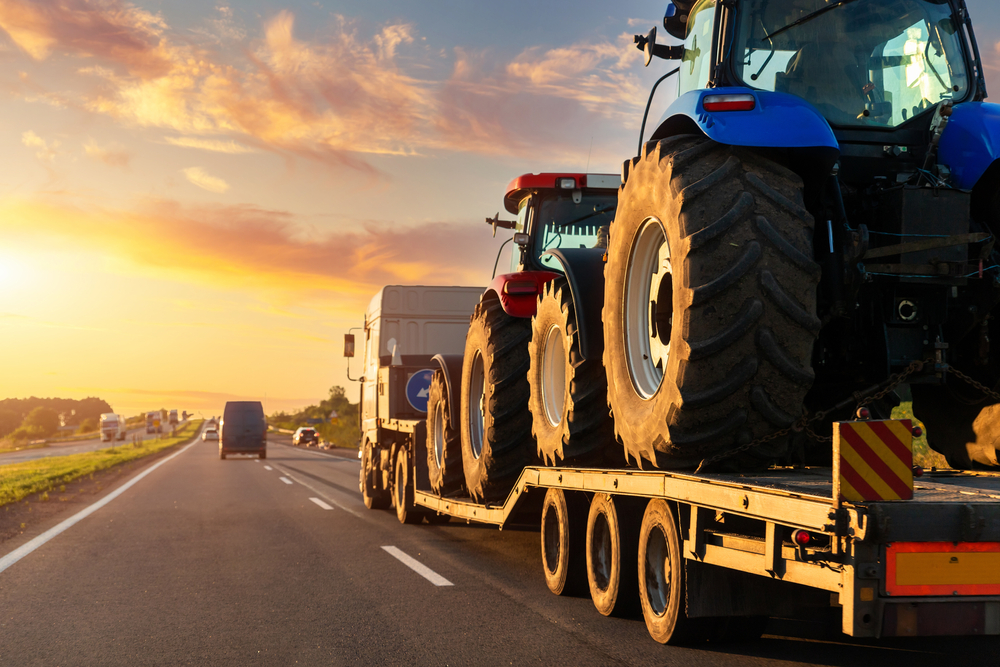How to Safely Transport Heavy Machinery

Transporting heavy machinery and equipment can be a daunting task, requiring careful planning and execution to ensure safety and efficiency. Whether you’re moving construction equipment, agricultural machinery, or industrial tools, following proper procedures is crucial to prevent accidents and damage. In this comprehensive guide, we will explore the steps involved in safely transporting heavy machinery.
Planning for Transportation
Assessing Equipment and Transport Needs
Before transporting heavy machinery, assess the specific equipment you need to move and the transport options available. Consider factors such as the size, weight, and dimensions of the machinery, as well as the distance and terrain of the journey. This initial assessment will help you determine the most suitable trailer or transport vehicle for the job.
Checking Legal Requirements and Permits
Ensure compliance with local and state regulations regarding the transportation of heavy machinery. Depending on the size and weight of the equipment, you may need special permits or escorts. Check weight limits, height restrictions, and any specific route regulations to avoid legal issues during transportation.
Securing Heavy Machinery to a Trailer
Choosing the Right Trailer
Select a trailer that is appropriate for the size and weight of your machinery. Flatbed trailers are commonly used for transporting heavy equipment due to their versatility and accessibility. Ensure the trailer has sufficient load capacity and tie-down points for securing the machinery.
Securing the Machinery
- Use Proper Tie-Down Equipment: Use heavy-duty straps, chains, and binders to secure the machinery to the trailer. Ensure the tie-downs are rated for the weight of the equipment and inspect them for any signs of wear or damage.
- Distribute Weight Evenly: Distribute the weight of the machinery evenly on the trailer to maintain balance and stability during transport. Position heavier items over the trailer axles to prevent trailer sway.
- Secure Moving Parts: Secure any moving parts or accessories of the machinery to prevent them from shifting or becoming damaged during transit. Use padding or protective materials to cushion vulnerable areas.
Preparing for Transport
Conducting Pre-Transport Inspections
Before loading the machinery onto the trailer, conduct a thorough inspection to ensure it is in proper working condition. Check for leaks, loose parts, or any structural damage that could affect safety during transportation. Address any maintenance issues before proceeding.
Loading and Positioning the Machinery
Carefully position the machinery on the trailer, following loading guidelines provided by the manufacturer. Use ramps or loading docks to safely load the equipment onto the trailer. Ensure the machinery is centered and secured to prevent shifting during transit.
Transporting Heavy Machinery
Driving and Handling Considerations
When transporting heavy machinery, drive cautiously and adhere to recommended speed limits. Be aware of road conditions, weather forecasts, and potential obstacles along the route. Make wider turns and maintain a safe following distance to accommodate the size and weight of the load.
Monitoring During Transit
Periodically check the load and securing mechanisms during transit to ensure everything remains intact and secure. Stop if necessary to adjust tie-downs or address any issues that may arise. Monitor temperature gauges and warning indicators on the machinery.
Unloading and Final Checks
Unloading Procedures
Upon arrival at the destination, follow proper unloading procedures to safely remove the machinery from the trailer. Use ramps or unloading equipment as needed, and ensure adequate clearance and stability during the unloading process.
Post-Transport Inspections
After unloading, conduct another inspection of the machinery to check for any signs of damage or issues that may have occurred during transportation. Document any discrepancies or concerns for further evaluation and maintenance.
Conclusion
Safely transporting heavy machinery requires careful planning, attention to detail, and adherence to safety regulations. By following the steps outlined in this guide—from planning and preparation to loading, transit, and unloading—you can ensure a smooth and secure transportation process for your valuable equipment. Prioritize safety at every stage to protect both your machinery and those involved in the transport operation.
Need an Equipment Rental Company in Monroe, LA?
Welcome to Ram Rent-All, Inc. If you are looking for quality equipment, look no further. We are your one-stop solution for all of your equipment rental needs. We have a huge selection of equipment to choose from, from lawn and garden tools to construction necessities. Options include air compressors, Bobcats, forklifts, generators, tractors, water pumps, mixers, light towers, pressure washers, and more! If you’re going to do a job yourself, you want the best tools, and we can supply them to you at a reasonable price, without the need for costly contractors or direct purchases. Call us today!
